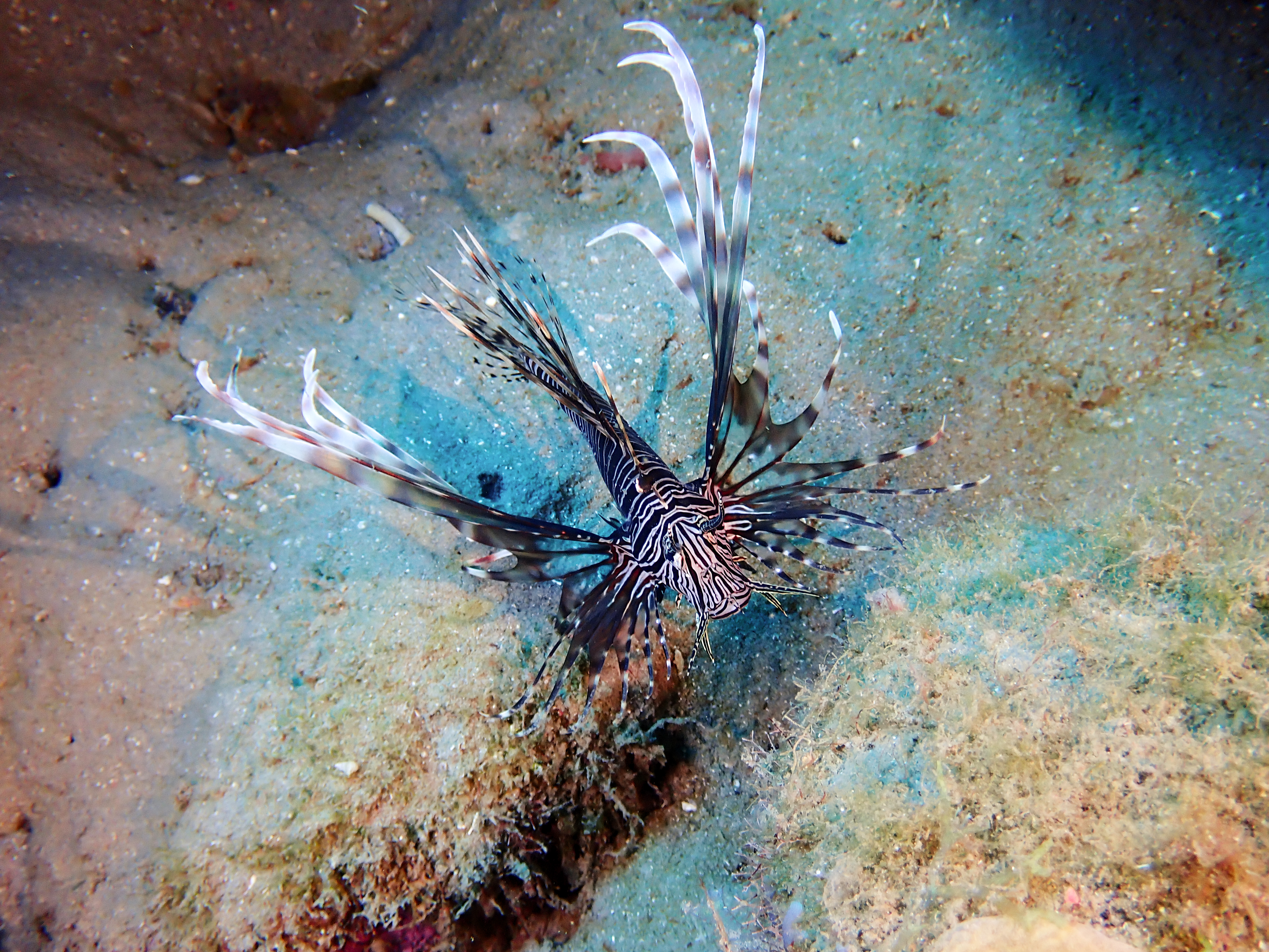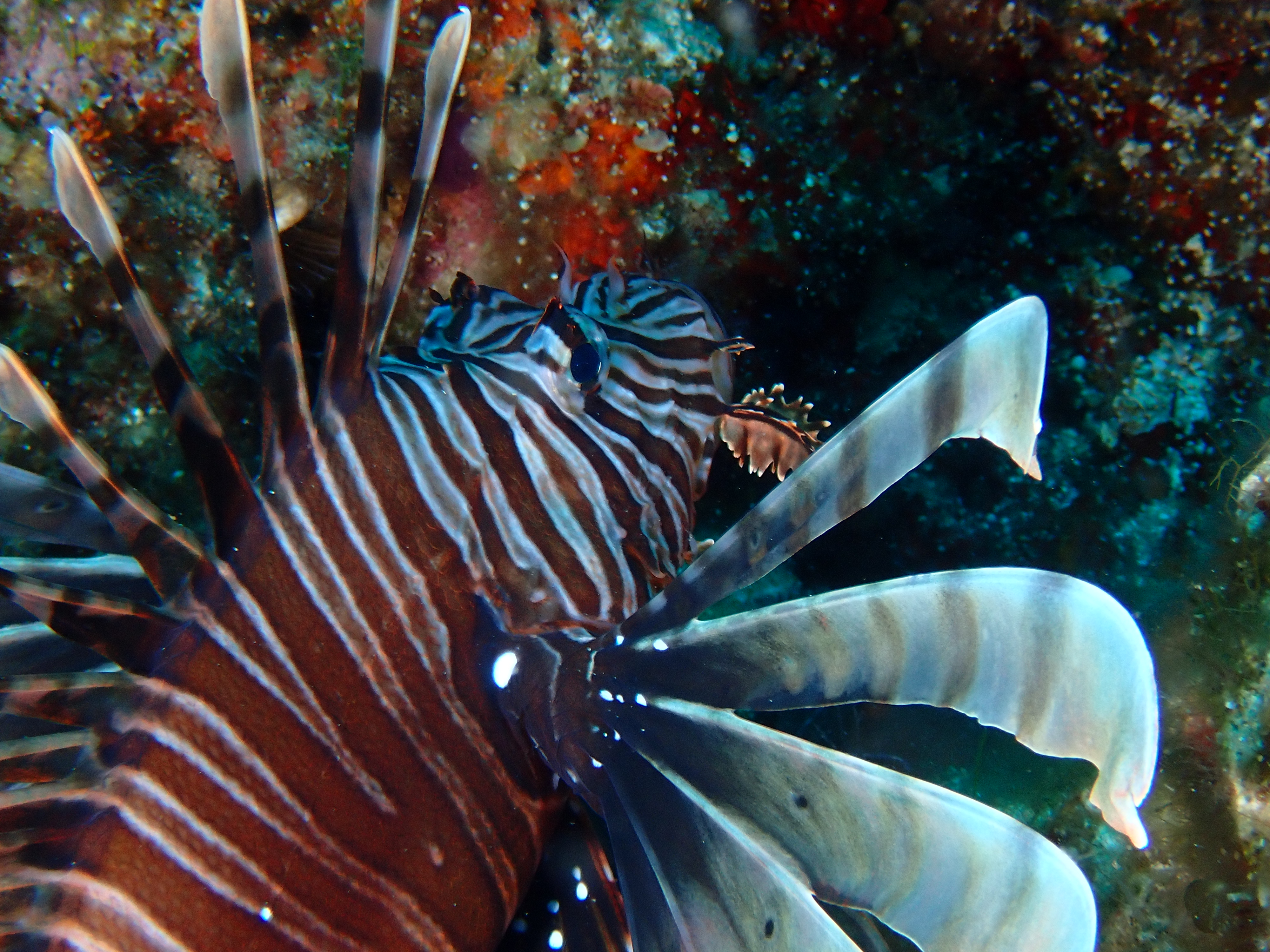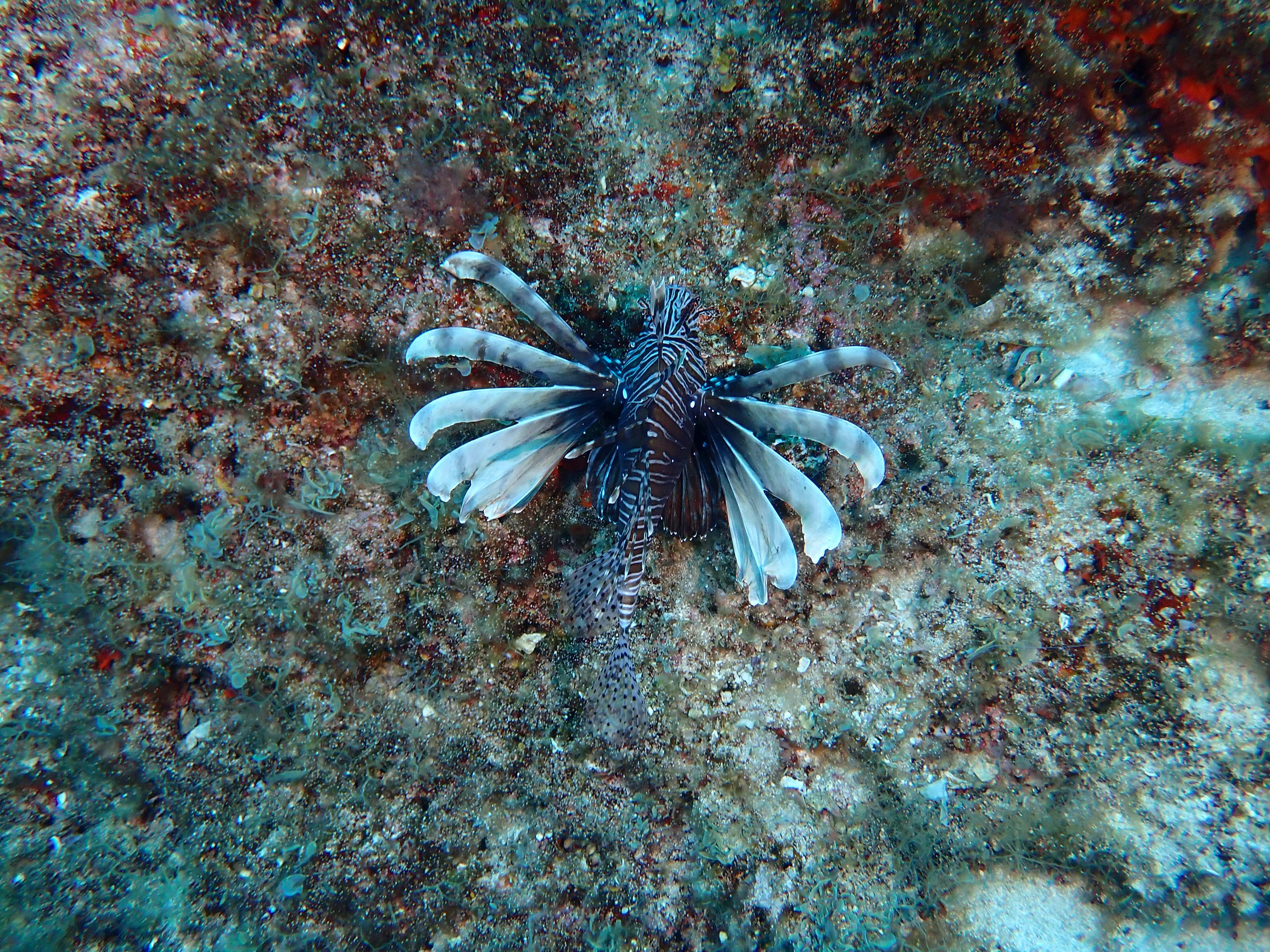> [!summary]- Classification
**Kingdom**:: [Animalia](Animalia.md)
**Phylum**:: Chordata
**Subphylum**:: [Vertebrata](Vertebrata.md)
**Superclass**:: Osteichthyes
**Class**:: Actinopterygii
**Subclass**:: Neopterygii
**Superorder**:: Acanthopterygii
**Order**:: Perciformes
**Suborder**::
**Superfamily**::
**Family**:: Scorpenidae
**Subfamily**::
**Genus**:: Pterois
**Species**:: P. volitans
**Vernacular**:: Common lionfish
## Photos

*[116 - 2023-03-01 - Sources chaudes - Saint Pierre - Martinique](116%20-%202023-03-01%20-%20Sources%20chaudes%20-%20Saint%20Pierre%20-%20Martinique.md) - In Martinique, where it's an invasive specie. It arrived in caraibean seas after an hurrican had destroy an aquarium that contained 4 individuals in 1992. 30 years later, it invades the caraibean seas.*

[96 - 2022-11-27 - Middle Garden - Sharm Al Sheikh - Egypt](96%20-%202022-11-27%20-%20Middle%20Garden%20-%20Sharm%20Al%20Sheikh%20-%20Egypt.md)

[106 - 2022-12-01 - Naama Bay Beach - Sharm Al Sheikh - Egypt](106%20-%202022-12-01%20-%20Naama%20Bay%20Beach%20-%20Sharm%20Al%20Sheikh%20-%20Egypt.md) - During night, hunting the yellow fish. As said on the bottom notes, they are attracted by the light, so one's need to take care of this.

*[130 - 2023-05-18 - Aspo faro - Epidaurus - Greece](130%20-%202023-05-18%20-%20Aspo%20faro%20-%20Epidaurus%20-%20Greece.md) - Closer on its eye and its skin flaps. I was suprised to see this species in the Mediterranean sea. As it was in Greece, we can suppose that it came from the Red Sea through the Suez Canal, or just was introduced, just like in the carribean sea.*

*[123 - 2023-05-15 - L'Aquarium I - Epidaurus - Greece](123%20-%202023-05-15%20-%20L'Aquarium%20I%20-%20Epidaurus%20-%20Greece.md) - We can distinctincly see its 10 soft rays*
## Notes
This one is the common species, the one that invaded the caraïbean sea desipte that it comes from the indian ocean. Recognizable by it's more pronounced radiated aspect than the [Pterois cincta - Red Sea lionfish](Pterois%20cincta%20-%20Red%20Sea%20lionfish.md).
Like any scorpenidae, it's a venimous and voracious species. Take care when diving by night in areas where there's a lot of these species, espacialy with the lights. They are attracted by the light during night and can come from nowhere to go on the light. If you point your light on any fish, it will see it and try to eat it.
## References
- https://doris.ffessm.fr/Especes/Pterois-volitans-miles-Rascasse-volante-du-Pacifique-de-l-ocean-Indien-835